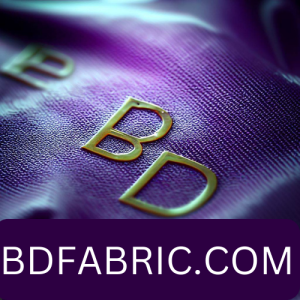Draw frame introduction definition purposes function
Draw frame introduction definition purposes function:
Table of Contents
Introduction:
The draw frame is the third stage or step machine in the successive stages of yarn production. Usually, the ‘draw’ frame is used after the blow room and carding machine. In the sliver obtained from the carding machine, the fibers are cross-sectional, hook-shaped, draw-curved and sliver coarse-thin, etc. The draw frame pulls the fibers of the slivers parallel and smooth to form new slivers, which are more smooth and parallel than carded slivers. https://bdfabric.com/working-process-of-building-motion-in-simplex-machine/
The main purpose of the draw machine is to straighten the tortuous, curly random fibers in the slivers and to reduce and double the weight of a unit length of the slivers to produce drawing slivers of uniform weight to make them suitable for yarn production by slivers. Spinning mills use 2 or 3 passage draw frames as per requirement. The use of 2 or 3 passage draw frames depends on the yarn quality, fiber type, and hook direction of the sliver produced and the vision of the mill management.
Definition of draw frame:
The fibers from the previous machines of the draw frame are available in the form of slivers, which are used as feed material in the draw frame. The fibers in the obtained slivers are scattered in different directions, rough, curled, curved, and transverse. A draw frame machine is used to convert the fibers into straight, parallel, and balanced by drawing and doubling. Drawing is the process of re-making slivers by pulling the fibers located in the slivers which are random, curled and crooked, light, and long, and arranging them in a regular, balanced and harmonious manner.

Purpose of draw frame:
The purpose of the draw frame is as follows:
1. Converting slivers from carding machines into slivers by drawing, doubling, and drafting.
2. Straightening and parallelizing the curved and curly fibers within the sliver.
3. To produce slivers of weight close to those produced by drafting and re-doubling the weight of a unit length of sliver.
4. Mixing and blending through the draw frame i.e. making a sliver of different quality or combination of different types of fibers.
5. To produce slivers of more uniform weight for further processing.
6. Depositing the produced sliver in coil form in sliver cans for easy transportation.
The function of the draw frame machine:
There are generally 3 functions in a draw frame machine.
1. Drawing.
2. Doubling.
3. Drafting.
1. Drawing:
Draw frame introduction definition purposes function. The method of lightening and lengthening the slivers by regularly and uniformly pulling them is called drawing. If you carefully observe the fibers of the sliver produced, it will be seen that the fibers located in the sliver are not parallel or straight, but crooked, curly, and scattered. The fibers need to be straightened and parallelized for convenience in later stages. The draw frame machine does the above work so the machine is called a drawing machine.
2. Doubling:
Doubling is the process of processing two or more slivers together in a machine to get 1 sliver delivery. Generally, the draw frame machine lengthens and thins the sliver regularly and uniformly by drafting, thereby increasing the irregularity of the slivers. Drafting and slivers are irregular as well as in doubling, slivers again regularly and smoothly reduce the irregularities. ie unit of sliver by reducing the length-weight, new slivers of equal weight are produced.
3. Drafting:
The process by which the slivers are drawn regularly and uniformly to make them longer and thinner is called drafting. Drafting is the ratio of slivers fed in drawing to slivers delivered i.e. If 8 slivers are fed and 1 sliver is delivered then drafting is 1:8. Drafting reduces the weight per unit length of the sliver while doubling again increases the weight per unit length of the sliver. A pair of rollers work for the drafting of the drawing roller. The speed of the delivery pair of rollers is higher than the speed of the feed pair of rollers






Great article! I found the introduction to draw frames very informative and well-explained. The article effectively covers the definition, purposes, and functions of draw frames. It’s a valuable resource for anyone seeking a comprehensive understanding of this topic. Well done!